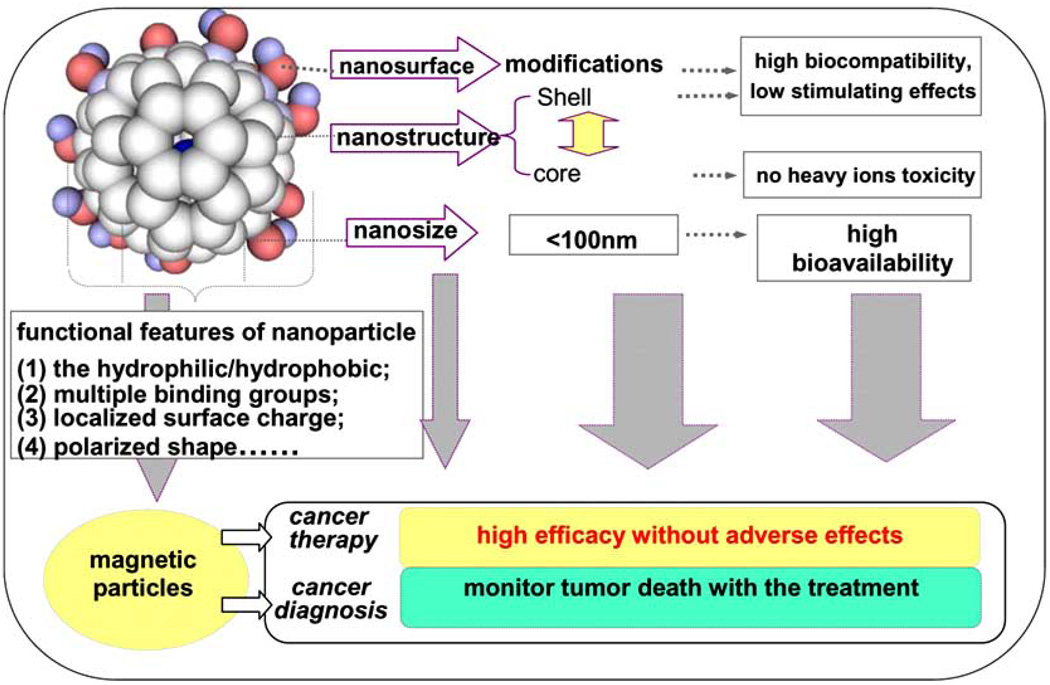Fig. (2). Unique structural and surface features of nanoparticles.
This sandwich-type nanostructure carries a potent anticancer nanomedicine that may produce little side-effects to normal tissues in vivo and nearly no cytotoxicity to normal cells in vitro. The inner core with or without heavy metallic atom, the type and number of outer surrounded functional-groups can be changed to generate different series of relatively non toxic anticancer nanomedicine. The size of individual particle is at nanolevel (less than 100 nm). The paramagnetic metallic atom inside the cage can serve as an MRI contrast agent to simultaneously monitor the chemotherapeutic effects during treatment of tumor.

